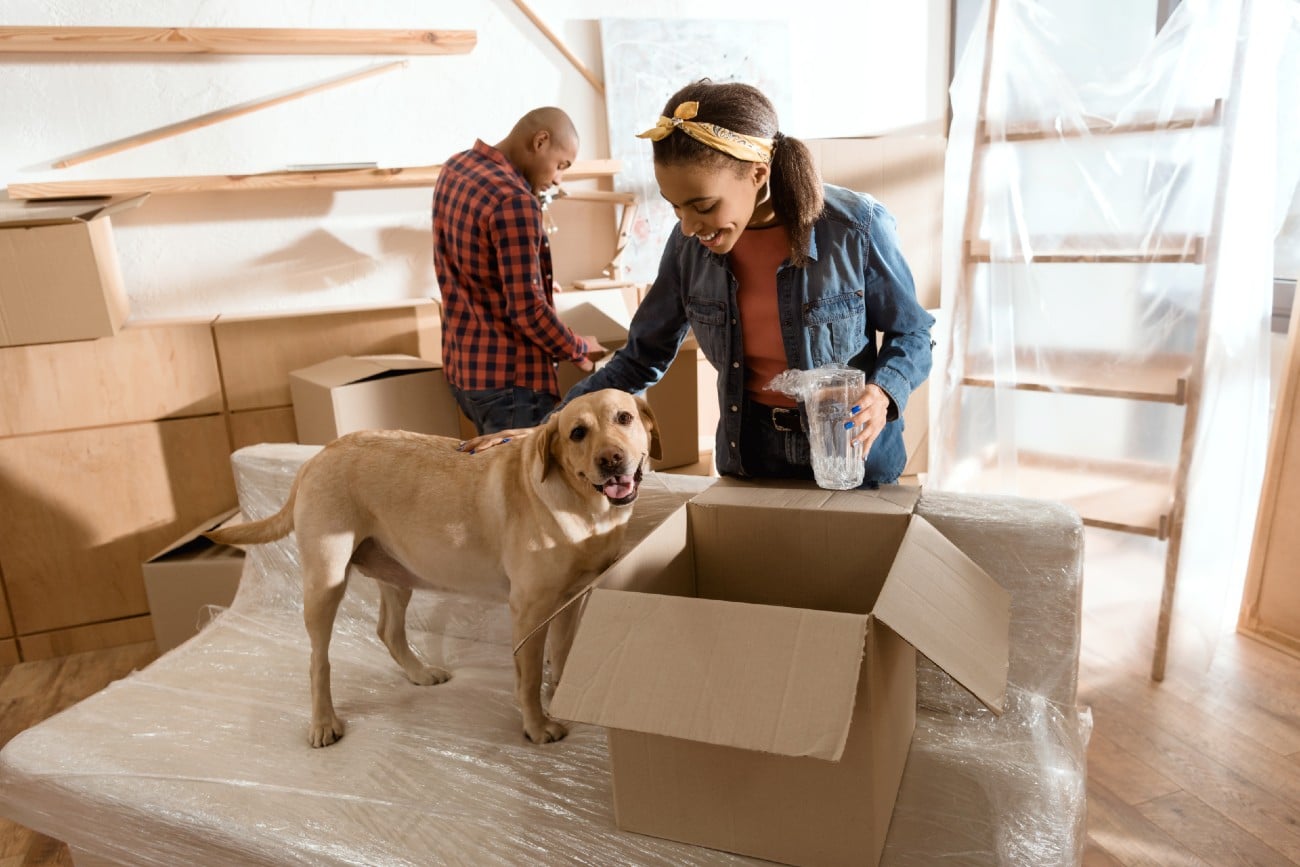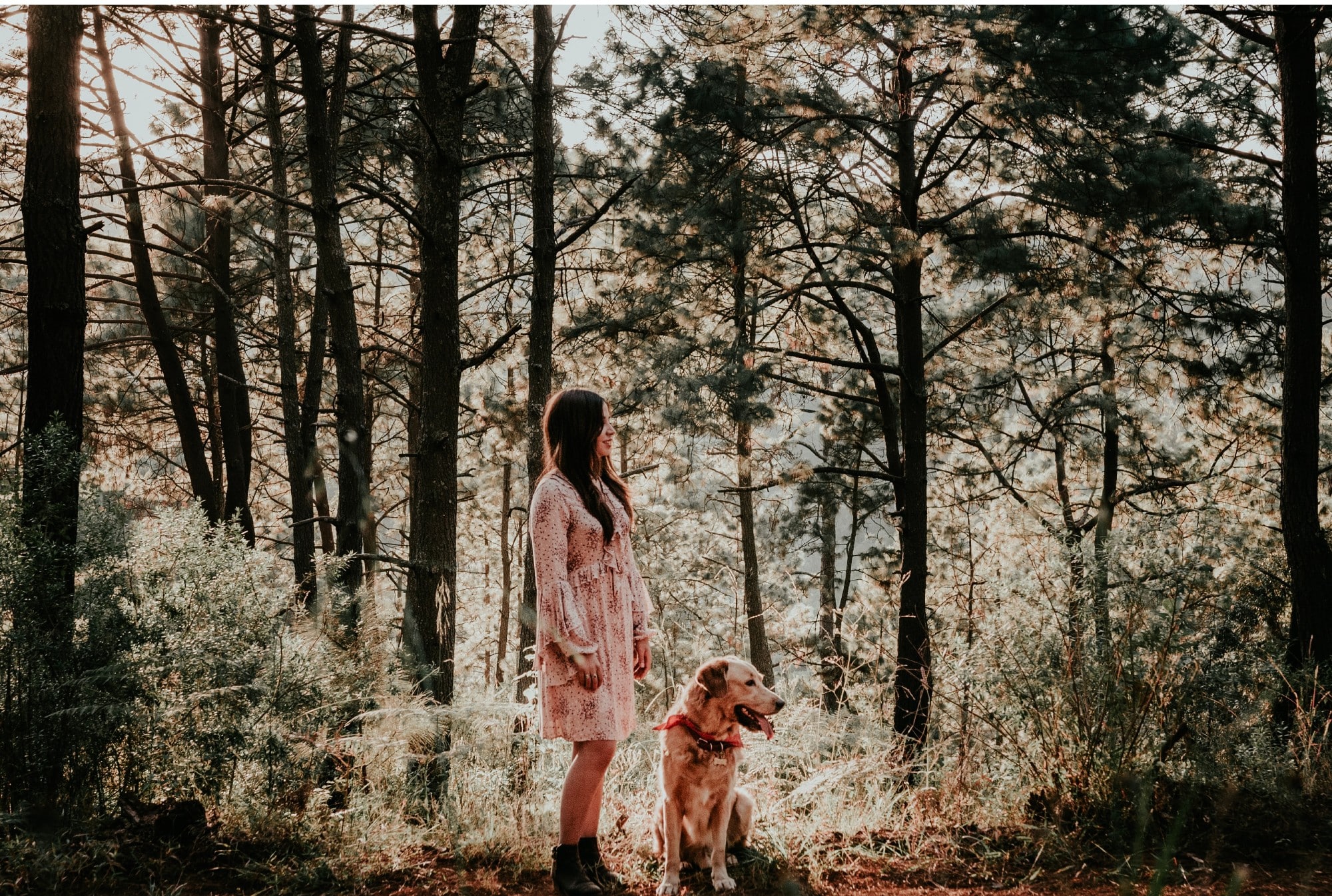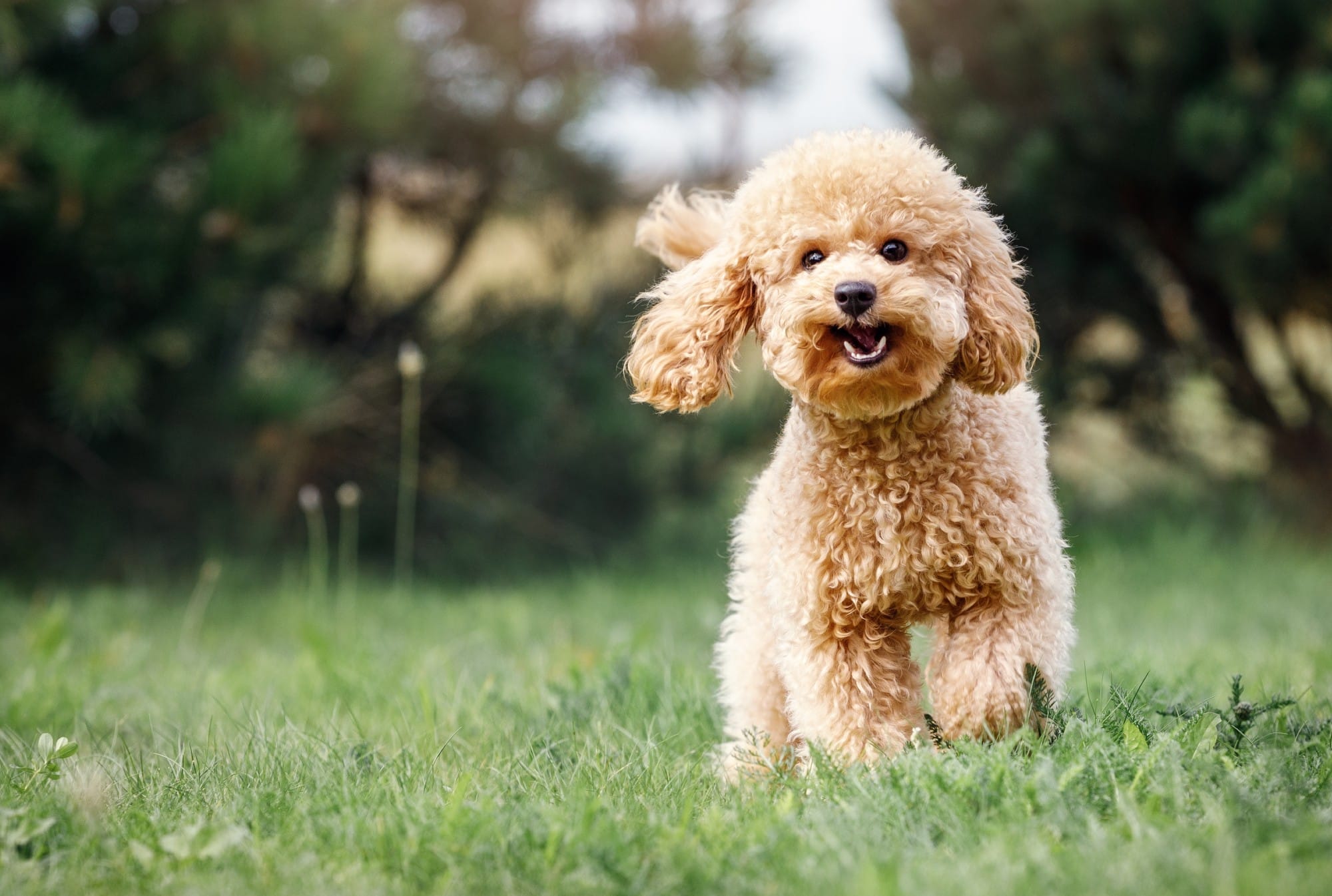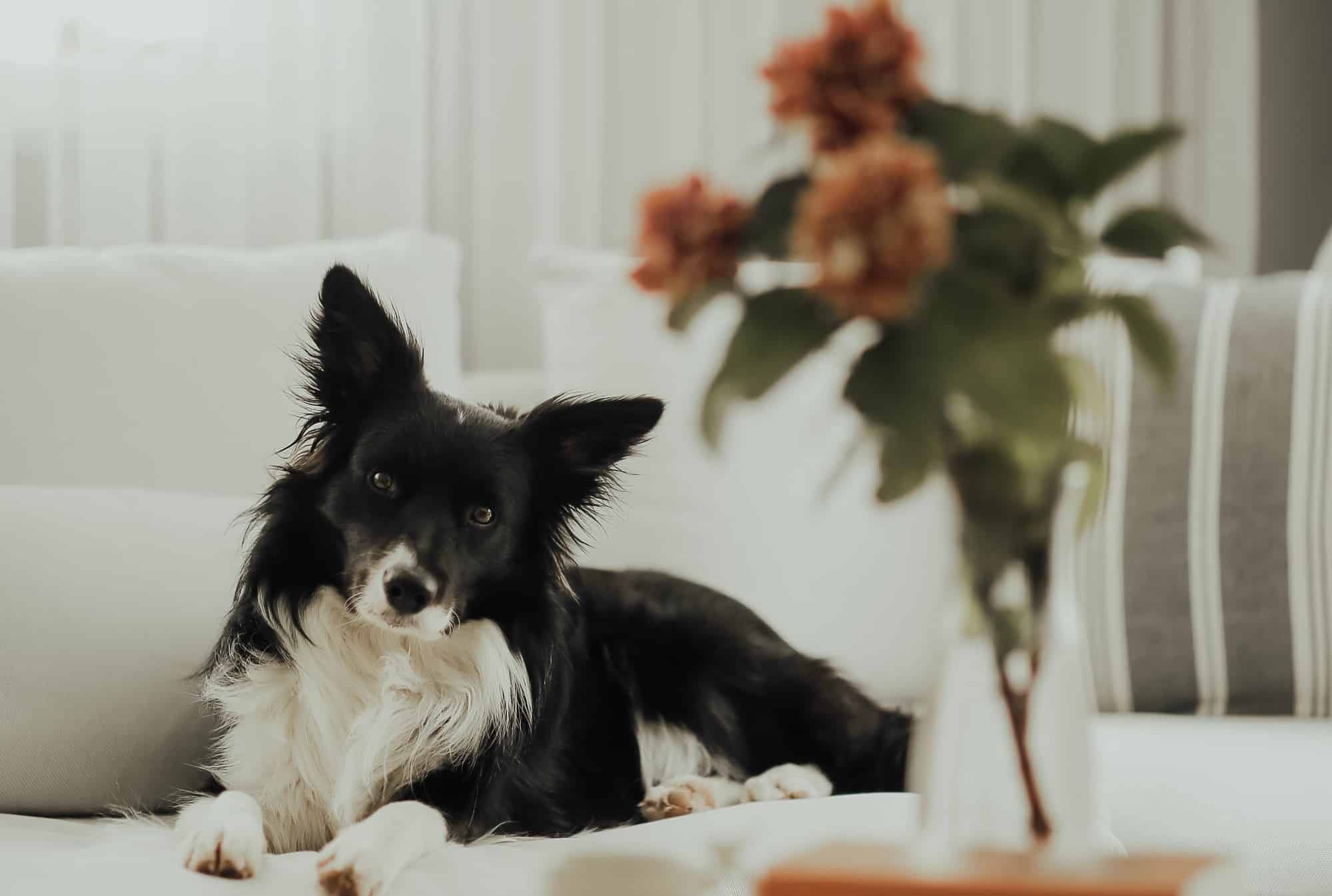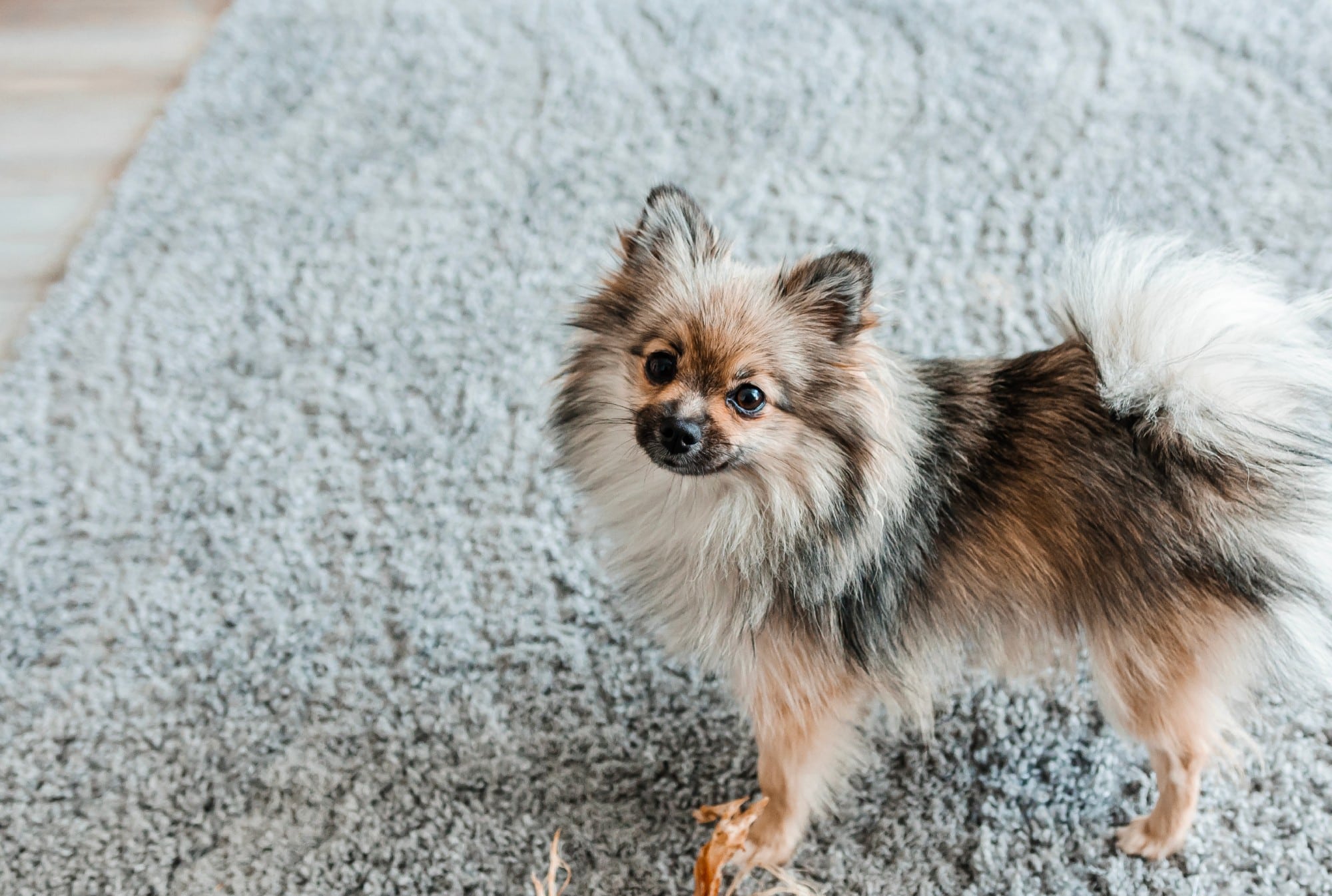Moving to a new home can be stressful for everyone, including your dogs. They have no idea what’s happening. Their kingdom is being packed up and taken away around them, and then they’re shuttled to a strange neighborhood and house. It’s seriously traumatizing.
That’s because most dogs thrive on routine. While dogs tend to orient their territory by where their humans are, they still rely on their favorite spot by the stove, their favorite bed, the flooring, their sidewalk, their dog park … you get the idea.
Related: Spring Cleaning: 9 Non-Toxic Dog Stain and Odor Cleaners That Get the Job Done
When you pack up their world and take them to a strange environment, your dogs no long know what to expect. This can lead to problems like separation anxiety, general anxiety and disorientation, improper elimination, destructive behavior and unusual vocalizations.
Signs of stress include:
- Trembling
- Drooling
- Tail tucked
- Hiding
- Yawning
- Accidents
- Licking lips
- Loss of appetite
- Diarrhea
- Aggression
- Panting
- Excessive shedding
There are steps you can take before, during and after your move to help your dog make the transition.
Before Your Move
“Show your dog the property before moving day, and potty train them before you go, if possible,” says Ian Stone, owner of Simpawtico Dog Training in Big Flats, New York and of Tilleo’s certified dog trainer. “The first time your dog sets foot on the new property, allow them ample time to explore and sniff at their own pace. Then let your dog have fun, get some good snooping in and then hang out.” Before leaving, take him on a walk around his new neighborhood.
“If your dog is avoidant or timid, then hang out where they’re comfortable, even if that’s just outside. In these cases, do several visits; each time you expose them to the same environment it becomes less scary,” Stone advises.
Finally, figure out where you plan to set up your dog’s things in the new home before you move in, says Stone. That includes deciding where your dog will sleep. Where will he eat? If you use a crate, where will you put it?
“Don’t wait until the dog is there to figure that all out on the fly. Try your best to keep things as predictable as possible. My suggestion is to approach it like you’re a kindergarten teacher on the first day of school, and show your dog where, how and when all the things happen.”
Related: The Best Vacuums for Dealing With Shedders and Tons of Dog Hair
On Moving Day
As you pack, keep boxes out of view of your dog as much as you can. Leave his area intact and pack his gear last. If during the packing process, you notice your dog becoming anxious and displaying any of the symptoms above, try to desensitize your dog to the chaos. Take frequent breaks from packing to play with your dog, and use plenty of treats.
“Moving day is hectic, and there will be tons of open doors,” says Stone. “If possible, designate a sitter for your pet. Daycare may be an option if your dog is familiar with it.”
If you don’t have anyone who can care for your dog on moving day, set up a confined space in a room, a pen or a crate if he’s crate-trained, Stone says. Make sure to first take him out long enough to pee and poop, get exercise and mental stimulation.
Once your dog is in a secure area where he can relax, leave him with his bed, toys, water and food bowl. Put a sign on the door to let the movers know to keep the door closed because there’s a dog inside.
Don’t forget to check on him throughout the day, says Stone. Brings treats, refill the water bowl, and sit by his side, talking softly to keep him calm.
At Your New Home
While the movers are bringing in furniture and boxes, find a quiet room for your dog to relax. Arrange the same basic set-up you had in the old house. Make sure to bring his bed, favorite toy, chew toys, a blanket and anything else that keeps him happy and calm.
When the movers have finished, let your dog out to explore his new domain. Set up his food and water bowls where you plan to feed him. Unpack his things first, and put his beds in a few different rooms so he knows he is welcome there.
“A great way to help dogs get acclimated to their new space is to play with them in it,” says Stone. “Play is a powerful agent for creating great first impressions, so do something they enjoy, whatever that is.”
Regardless of your careful planning, your dog may still take some time to adjust. You may have to reinforce training, says Stone. “Run through a potty-training regimen the first couple of weeks just to sharpen it up and apply it to the new environment. Don’t just assume potty training translates over.”
A new environment brings a whole new sensory experience. Your dog will be more sensitive to noise, smells and energy. Moving from a quiet suburb to the big city can be incredibly stressful for dogs, and so can the reverse move. Sirens and garbage trucks can be as unsettling as a field full of crickets to a dog, especially if they’ve never heard it before.
“New sounds and rhythms will probably put your dog on alert,” Stone notes. “Be supportive and help form good associations with all of the new, incoming stimuli.”
Most dogs relax in a few days, but some dogs may take longer than others to adjust. Give your dog lots of attention and exercise. Try not to leave your dog alone in the new home for at least a few days. Then start by leaving him alone for short periods of time, but wait until after you’ve given him plenty of exercise and he’s settled down to relax.
If your dog is still feeling anxious after a few weeks go by, consider calling in a professional, says Stone. “Whether that’s a local positive trainer, a behavioral consultant, or your vet who can prescribe calming medications, remember it’s OK to ask for help. If you feel like no meaningful progress is being made, get help sooner rather than later!”
Related: Want to Make Your Dog More Calm at Home? Consider Feng Shui.
This article is for informational purposes only. It is not, nor is it intended to be, a substitute for professional advice.













